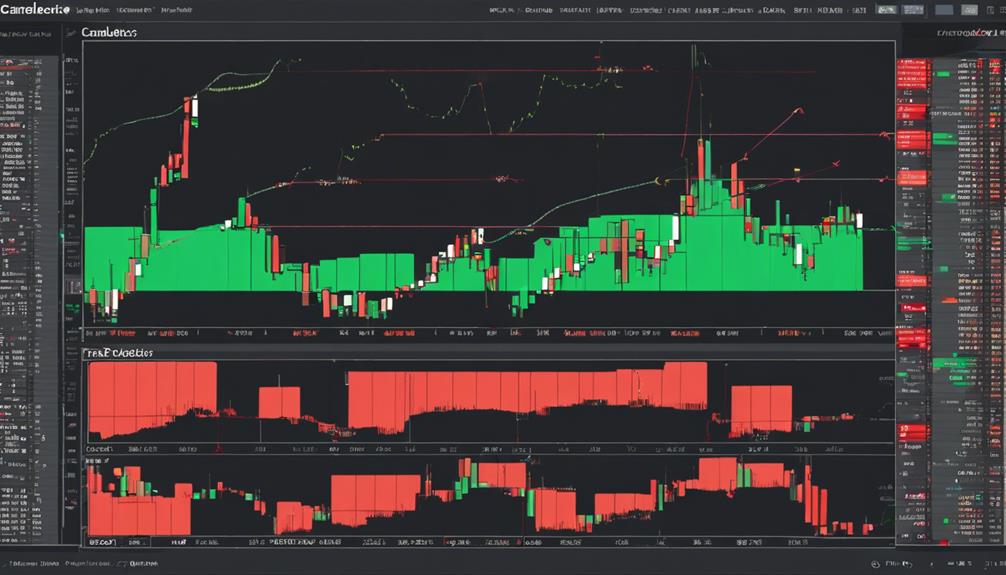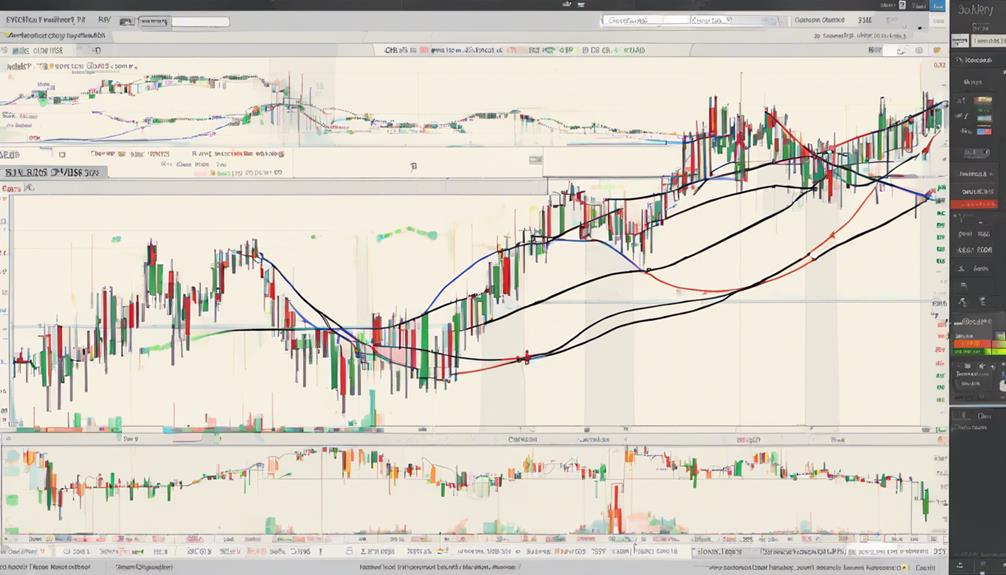In the realm of technical analysis, mastering the Parabolic SAR indicator can be a game-changer for traders seeking to enhance their strategies.
The utilization of three key techniques can significantly elevate one's trading approach, ushering in a realm of precision and informed decision-making.
From identifying trend reversals to strategically setting stop-loss levels and exploring the synergies with complementary indicators, the potential for optimizing trading outcomes is vast.
These techniques form the cornerstone for traders looking to navigate the complexities of the market with finesse and acumen, offering a glimpse into the realm of possibilities that await those who embrace these strategies.
Identifying Trend Reversals With Parabolic SAR
The identification of trend reversals with the Parabolic SAR indicator is a crucial aspect of technical analysis in trading strategies. Traders rely on the movement of the Parabolic SAR dots relative to price bars to anticipate and adjust to potential trend shifts.
When the Parabolic SAR dots transition from above to below the price bars in a downtrend, it signals a reversal. Conversely, in an uptrend, a reversal is indicated by the dots moving from below to above the price bars. These changes in dot positions serve as key signals for traders to adjust their strategies accordingly.
Setting Stop Loss and Take Profit

Incorporating strategic stop loss and take profit levels is integral to leveraging the Parabolic SAR indicator effectively in trading scenarios. When setting stop loss levels, traders should align them with the Parabolic SAR dots to safeguard profits and mitigate potential losses. The distance between the entry point and the SAR dot can serve as a guiding metric for establishing these levels.
It is advisable to continuously adjust stop loss orders as the Parabolic SAR dots move, allowing traders to either secure profits by trailing the price or minimize losses by tightening the stop. Determining take profit levels can be based on the distance to the next SAR dot or key support/resistance levels, offering a structured approach to capturing gains.
To optimize profits during robust trends, traders may incorporate trailing stop techniques with the Parabolic SAR, enabling them to ride the trend while securing accumulated gains effectively. By integrating these strategies into their trading approach, investors can enhance their risk management and overall trading performance.
Using Parabolic SAR With Other Indicators

Utilizing Parabolic SAR in conjunction with various technical indicators can enhance trading strategies by providing valuable insights into market trends and potential reversal points. When combined with Moving Average Convergence Divergence (MACD), Parabolic SAR can offer enhanced trend confirmation, aiding traders in making informed decisions.
Additionally, pairing Parabolic SAR with the Relative Strength Index (RSI) helps in identifying overbought or oversold conditions, signaling potential reversals. Integrating Parabolic SAR with Bollinger Bands offers a clearer understanding of price volatility and potential breakout levels.
Moreover, the synergy between Parabolic SAR and the Average Directional Index (ADX) assists in determining trend strength and suitable entry or exit points. By incorporating Parabolic SAR with Fibonacci retracement levels, traders can pinpoint crucial support and resistance levels, facilitating better trade executions.
The strategic utilization of these indicators in conjunction with Parabolic SAR can provide traders with a comprehensive framework for analyzing market dynamics and making well-informed trading decisions.
What Are the Best Techniques for Using the Parabolic SAR Indicator for Swing Trading?
When it comes to mastering Parabolic SAR indicator for swing trading, it’s important to focus on trend direction changes and potential entry and exit points. Using the indicator in conjunction with other technical analysis tools can help identify strong trends and improve overall trading success.
Frequently Asked Questions
What Is the Best Parabolic SAR Strategy?
The best Parabolic SAR strategy involves leveraging its strength in identifying trend reversals, offering valuable insights for traders. Combining it with complementary indicators like moving averages or RSI can further enhance trading precision and decision-making processes.
What Is the Best Time Frame for Parabolic Sar?
What time frame optimizes the Parabolic SAR indicator's effectiveness? Choosing the right time frame aligns with trading goals. Shorter frames suit day trading for quick SAR signal-based trades, while longer frames fit swing trading to capture extensive trends. Experimentation tailors the approach to individual preferences.
How Accurate Is the Parabolic SAR Indicator?
The accuracy of the Parabolic SAR indicator varies based on market conditions. In trending markets, it offers reliable signals. However, in choppy or sideways markets, it may generate false signals. Combining it with other indicators can enhance its precision and effectiveness.
What Is the Best Acceleration Factor for Parabolic Sar?
The optimal acceleration factor for the Parabolic SAR indicator is crucial in gauging trend strength and potential reversals. This factor, starting at 0.02 and increasing by 0.02, influences the speed of dot adjustments, impacting signal timeliness and trader decisions.
Conclusion
In conclusion, incorporating the Parabolic SAR indicator with other technical indicators, adjusting settings for optimal performance, and being mindful of market conditions are essential techniques for successful trading.
Like a skilled navigator using multiple tools to navigate through treacherous waters, traders can utilize these strategies to enhance their decision-making and improve their trading outcomes.
By following these techniques, traders can navigate the complexities of the market with greater precision and confidence.
